“Standing up to your ankles in rising waters in Holland is not the same thing as wading up to your neck in a tidal wave flood in a street in Jakarta.” Arya Putra recently obtained his Master’s degree at the faculty of Geo-Information Science in Twente. For his thesis research, he went home to Jakarta and had a close look at Cordaid’s resilience project in Marunda, one of the world’s fastest-sinking urban areas.
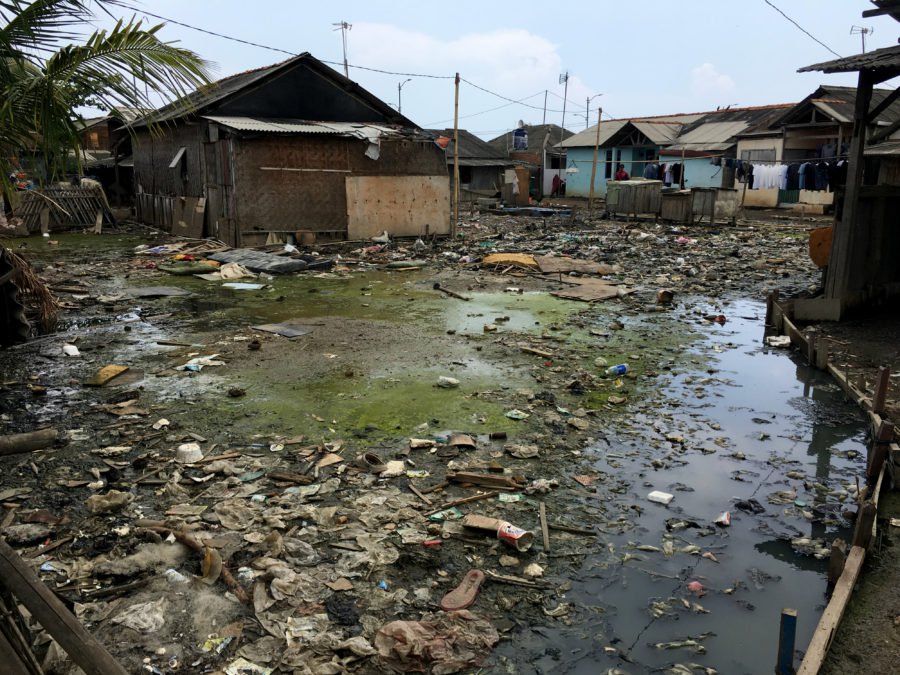
(Street in Marunda. © Arya Putra)
There – on Jakarta’s beleaguered northern shore – he conducted his Urban Planning and Management field research for several weeks. Object of his research: to review Cordaid’s resilience project and find out how community participatory processes help local citizens influence the city’s spatial planning.
Wet feet inside and outside of the house
Three years ago Cordaid started working in Marunda. The uphill battle with tidal waves, heavy rain, rising water levels, destructive winds and bad waste management is part and parcel of living on the poorest side of Jakarta. And even though Jakarta is constructing ‘the great sea wall’ to prevent floodings, most poor families in Marunda still get wet feet. Inside and outside of their homes.
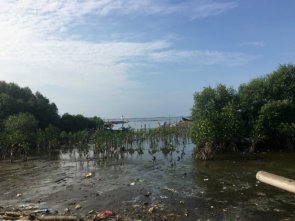
Outskirts of Marunda, touching the shoreline (© Arya Putra)
Cordaid’s goal is to increase disaster and climate change resilience among the disadvantaged communities. These are the low-income fishermen households as well as the newcomers known as ‘the flat people’: evicted families who were relocated to Marunda. As previously reported, we have been quite successful so far.
Arya Putra spent several weeks researching Cordaid’s resilience project and interviewing beneficiaries. Cordaid uses the outcomes of his research – to be read in detail in his thesis – to further optimize its interventions in Marunda
What did you find out?
I interviewed 45 people, mainly women. I was struck by their self-confidence to speak out. All of them told me, an independent researcher, how they had increased their coping capacities to deal with everyday problems. They had improved their livelihoods by picking up urban farming, doing business, making small profits, taking loans and using other possibilities offered by the project. For me, this clearly showed the success of Cordaid’s approach.
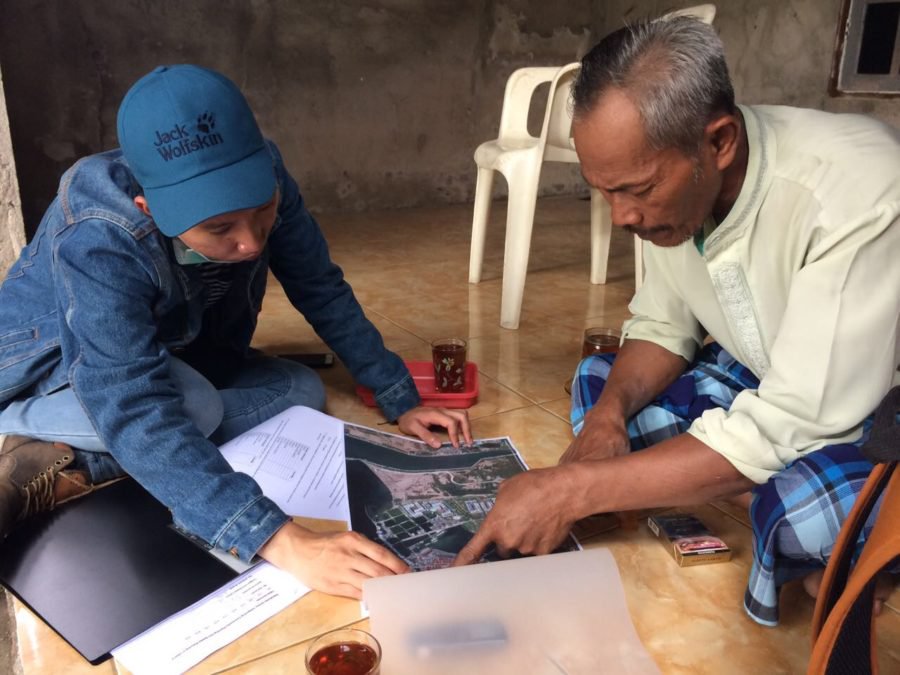
Arya Putra (left) during one of his research interviews (© Arya Putra)
Their stories made it very clear that if you want to strengthen low-income families’ capacities to cope with disaster risks such as flooding, you can’t just focus on climate change impact and exposure itself. People also need to be able to improve their livelihood and income opportunities. That’s what Cordaid’s resilience project is about.
Equally striking was the fact that a lot of interviewees do not see the rising tide and the floodings as the main risk. It’s something they have been coping with for generations and somehow they have accepted it. They lack the means to go elsewhere. Some are fatalistic. Others are optimistic, saying they will be able to cope with it, even if things get worse in the future. Their main concern is next day’s meal, not future hazards.
The whole idea is to increase their awareness and to provide the kind of geo-information that helps them prepare and mitigate climate change risks.
What kind of information helps them to do that?
All kinds. Obviously, they need detailed weather forecasts. But also historical hazard data – what kind of floodings, waves, typhoons happened where in the recent past and are likely to occur again? They also need to know more about local drainage systems, which directions the pipes, the condition of the pipes, etc. Once they have this information they can act more efficiently when crises occur, better prepare for future hazards, and hold city authorities accountable.
Marunda families mostly just look at the clouds to know whether tidal waves and storms are coming. That’s totally inaccurate. And they do clean up waste collectively every week, but it’s of little use if they do not even know where the local drainage system is blocked or broken.
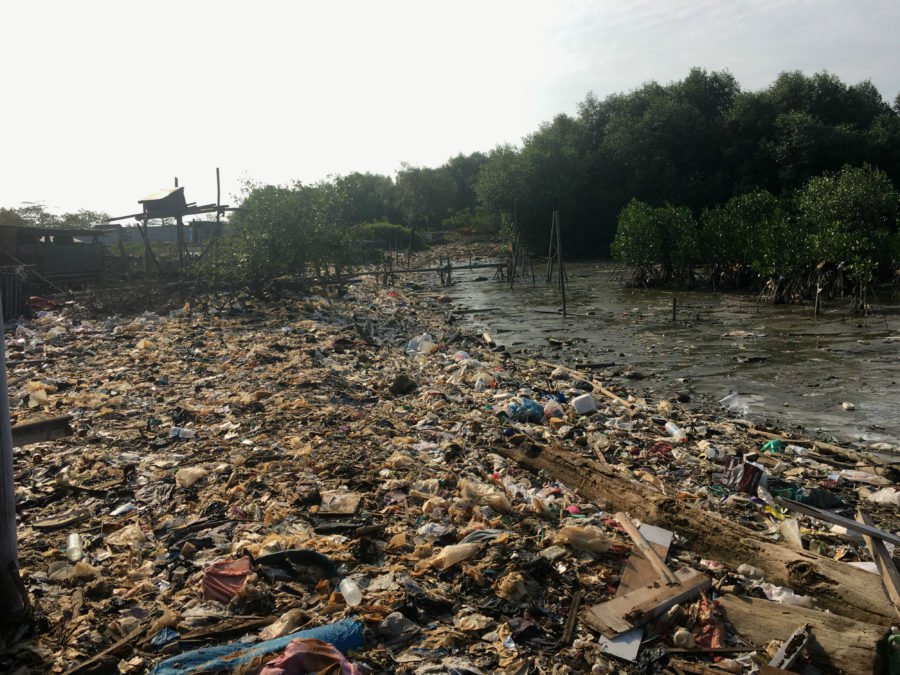
Marunda. Amassing waste near the shore (© Arya Putra)
To change this, Cordaid uses geo-information technology to inform the Marunda community. You have analysed this. What was the outcome?
The kind of web-based GI technology empowers and marginalizes communities at the same time. Productive age groups tend to leave their homesteads to find an income elsewhere. Those who stay behind, elderly and children, have no access to the internet. They lack the hardware and the knowledge. Most of them don’t have a mobile phone. Cordaid’s focus is on youth, young helping them to make community hazard and vulnerability maps. For this, they use local and also web-based information. It works for them because they have online access.
The elderly have no internet access. For them, posting print-outs of forecasts and other essential risk-related information in key public spots is more effective. Of course, project staff observed this as well and looked into this.
You also looked at factors that prevent or obstruct community participation in the city’s urban planning processes. Can you name a few?
I found that some urban planning authorities have a silo mentality. Meaning they don’t easily share information amongst government institutions. Also that the city’s leadership tends to ignore bottom-up approaches. The dominant form of leadership is still top-down, which is not conducive to community participation. And thirdly, there’s a technological factor. City planning government institutions use different map projection systems, making it very difficult for them to collaborate and use these spatial data effectively. Unifying GI systems would significantly help the population who is most at risk. They would be better informed, could take appropriate action and become more resilient.
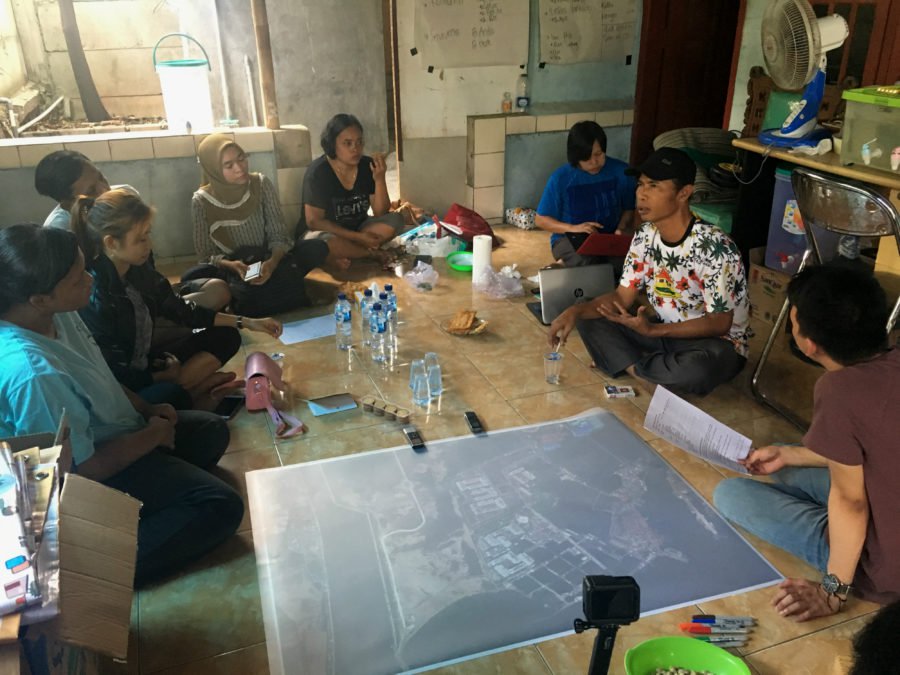
Marunda citizens discussing hazards and vulnerabilities in their neighbourhood, using detailed maps of the locality (© Arya Putra).
What would you recommend to Cordaid?
Cordaid and its Indonesian NGO partners are doing a great job together with the Marunda community. But the project could gain a lot by collaborating more intensely with the city’s urban planning authorities. And by working more with Indonesian academicians and experts in fields like spatial planning, climate change, waste management, risk mitigation. This would deepen Cordaid’s multi-stakeholder approach.
During your studies, you lived in Twente for a few years. What was that Dutch experience like?
Holland is very well managed! What really struck me is that the Dutch have a management style that prioritizes people and wants people’s lives to improve. For example, in Den Haag I experienced flooding once. Nothing Indonesian-like, though. The water had only risen ankle-high. But everybody immediately responded, local authorities and the community, to control this minor crisis as fast as possible. Where I live a lot of big infrastructural plans and projects are being rolled out, without really considering people’s needs first.
Floods on the north side of Jakarta, rise up to people’s necks. I can tell you, that is not the same thing as in Holland. These water hazards kill people and destroy houses. Yet people accept it. And the response from all sides remains shockingly low. It’s that attitude, and the lack of means and information that allow people to act, that Cordaid tries to change in one of Jakarta’s most unsafe neighbourhoods. Cordaid tries to change that attitude and give people the means and the information that allow them to act effectively.
Read more
In this fact sheet you can read more about Cordaid’s resilience project in Marunda. This page gives you an overview of Cordaid’s resilience program.
This article was originally published on Cordaid.





